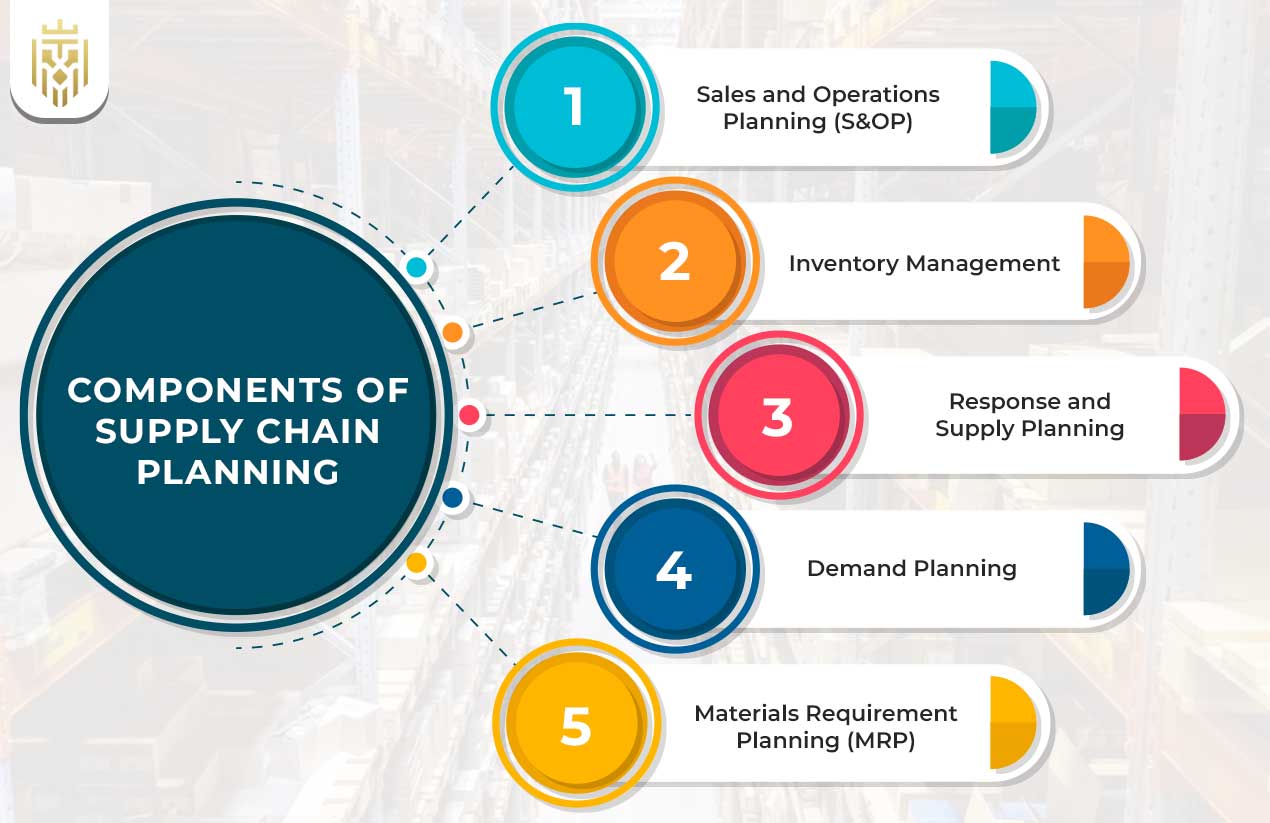Supply Chain Planning
Supply chain planning coupled with supply chain management therefore refers to the timely and effective coordination of different activities towards the achievement of the goal of supplying products from the supplier to the customers at the least cost possible. In other words, it encompasses production and inventory data, the location of stored items, and how they should be transported. Supply chain planning solutions play a key role in streamlining this entire process. Efficient inventory levels management and production planning ensure that businesses can meet customer demand without unnecessary costs or delays in the supply chain planning process.

Importance of Supply Chain Planning:
Supply chain planning is significant in foretelling the planning of supply to cut resource wastage, lower expenses on operations, and enhance customer satisfaction. It assists companies to foresee demand, perform inventory control, and organize on supply chain, and all these lead to proper and timely supply of products. The supply chain planner leverages data and insights to build a robust supply chain plan that aligns with supply chain operations and company goals. Additionally, integrated business planning ensures coordinated action across departments using the best supply chain planning software.
Components of Supply Chain Planning:
Supply chain planning sub-activities include future supply chain strategic activities that are essential for the efficient flow of the entire supply chain. Every component is tuned to address varied perspectives of the supply chain so that integration, as well as operations, are effective for better supply chain performance and satisfaction of customer needs. Effective planning process helps in strengthening ties with supply chain partners, ensuring seamless supplier management, and reducing the risk of supply chain disruption.

Sales and Operations Planning (S&OP):
S&OP is a cross-functional business planning tool that involves managing demand and supply plans with the support of the organization’s financial targets. It combines the aspects of sales, marketing, as well as operations to come up with a single plan of action. The goals of S&OP include issues such as level setting of supply and customer demand, controlling the inventory levels, and aligning production planning with market dynamics. Organizations often use sap integrated business planning tools to implement S&OP more effectively.
Steps in S&OP Process:
The Sales and Operations Planning (S&OP) process enhances supply chain performance by integrating data-driven steps: Data Gathering, Demand Planning, Supply Planning, Reconciliation, and Executive Review. It enables streamlined supply chain planning solutions, optimizes the manufacturing process, and ensures accurate alignment with customer needs and future demand forecasts.
-
Data Gathering:
In the S&OP process, data gathering forms the backbone of effective supply chain planning software by consolidating information from sales, marketing, operations, and finance. This integration strengthens logistics management and enables more accurate forecasts. Such data synergy drives better coordination across supply chain partners and boosts supply chain operations efficiency.
-
Demand Planning:
Demand planning ensures customer needs are met by analyzing market trends and formulating a robust demand plan. It is critical for improving inventory control, optimizing supply chain planning solutions, and forecasting future demand. Using advanced supply chain planning software, businesses enhance supply chain performance and make informed decisions in real time.
-
Supply Planning:
Supply planning involves aligning the manufacturing process, production scheduling, and distribution to meet future demand efficiently. This step in supply chain operations uses inventory optimization tools to maintain adequate stock levels. Integrated tools like SAP Integrated Business Planning ensure synchronization with demand plans and better collaboration with supply chain partners.
-
Reconciliation:
Reconciliation is a collaborative step ensuring alignment between demand and supply plans, financial goals, and strategic objectives. By leveraging integrated business planning, businesses enhance supply chain performance and improve decision-making. This step promotes cross-functional communication, ensuring agility in addressing gaps across supply chain planning solutions.
-
Executive Review:
During the executive review, leaders evaluate the consolidated S&OP plan, ensuring strategic alignment of supply chain operations, finance, and sales. This step refines inventory control strategies and aligns supply chain planning software with organizational goals. Executive insights enhance agility and strengthen partnerships with supply chain partners.
Inventory Management:
Inventory management covers all the processes right from the manufacturers up to the warehouses and all through to the points of sale. It guarantees that a specific amount of products is delivered at an appropriate time in order to satisfy customer needs without possessing the inventory for a long period. Efficient inventory levels are crucial for cost control and inventory optimization, which is greatly enhanced using modern supply chain planning software to ensure accuracy and efficiency.

Inventory Management Techniques:
Effective inventory management is essential for improving supply chain performance and ensuring availability of goods. Techniques like Just-in-Time (JIT), Economic Order Quantity (EOQ), ABC Analysis, and the Reorder Point System streamline inventory optimization and logistics management using robust supply chain planning software and data analytics tools.
-
Just-in-Time (JIT):
Just-in-Time (JIT) ensures products and raw materials are received only when needed, minimizing holding costs. This technique aligns with inventory optimization and enhances supply chain operations by reducing waste. Integrating JIT into supply chain planning solutions enables better responsiveness to future demand and improves the manufacturing process.
-
Economic Order Quantity (EOQ):
The Economic Order Quantity (EOQ) model minimizes inventory holding and ordering costs by determining optimal purchase quantities. It boosts inventory control and enhances the efficiency of supply chain planning software. EOQ also ensures the availability of stock aligned with future demand, streamlining overall supply chain operations.
-
ABC Analysis:
ABC Analysis classifies inventory into A, B, and C categories based on value and consumption rate, improving inventory control. This technique supports strategic decision-making in supply chain planning solutions and maximizes supply chain performance. It enables targeted attention to critical items using supply chain planning software.
-
Reorder Point System:
The reorder point system determines the precise stock level at which new orders should be placed to avoid shortages. It ensures optimal inventory optimization, balances supply and demand, and enhances supply chain operations. Advanced tools like SAP Integrated Business Planning improve forecast accuracy and stock management.
Response and Supply Planning:
Response and supply planning involves identifying ways in which the supply chain network is ready to provide adequate and timely responses to the changes in the demand and supply factors. This entails synchronizing timelines, affecting supplier communication, as well as adapting inventory levels to respond to variability in customer demand. A well-crafted supply plan and effective production schedule are integral components of the supply chain planning solutions used to improve responsiveness and mitigate supply chain disruption.
Key Aspects of Response and Supply Planning:
Effective response and supply planning strengthens supply chain performance through Risk Assessment, Scenario Planning, Supplier Collaboration, and Technology Integration. These elements help organizations respond to future demand, optimize inventory control, and enhance logistics management through modern supply chain planning software.
-
Risk Assessment:
Risk assessment involves identifying potential disruptions and developing mitigation strategies to protect supply chain operations. This key aspect of supply chain planning solutions enhances resilience and supports efficient inventory optimization. Proactive planning with tools like SAP Integrated Business Planning ensures continuity and alignment with customer needs.
-
Scenario Planning:
Scenario planning enables businesses to prepare for multiple future outcomes and develop contingency strategies. It strengthens supply chain planning solutions and improves adaptability in logistics management. Using advanced supply chain planning software, organizations can enhance visibility, forecast future demand, and manage risks effectively.
-
Supplier Collaboration:
Strong supplier collaboration improves supply chain performance through coordinated planning, accurate forecasting, and shared data. It enhances inventory control and supports agile responses to customer needs and future demand. Tools like SAP Integrated Business Planning help align goals with supply chain partners seamlessly.
-
Technology Integration:
Technology integration, including SAP Integrated Business Planning, improves decision-making by combining real-time analytics, forecasting, and planning. It enhances supply chain planning solutions, boosts supply chain operations, and supports inventory optimization. Leveraging technology ensures synchronization across departments and stronger collaboration with supply chain partners.
Demand Planning:
Demand planning entails predicting demand for a particular product in the future so that it can be availed in the market when due. It also applies past sales data, market, and other quantitative indexes to make future demand forecasts. This helps in aligning production planning and managing inventory levels effectively. Leveraging supply chain planning software, companies can anticipate customer demand more accurately, reducing risks of overproduction or stockouts.
Factors Influencing Demand Planning:
Accurate demand planning relies on understanding Market Trends, Seasonality, Promotional Activities, and the Competitive Landscape. These factors drive efficient supply chain planning solutions, support precise forecasting of future demand, and help align inventory levels with actual customer needs using supply chain planning software.
-
Market Trends:
Market trends, combined with sales data and economic indicators, shape supply chain planning solutions by forecasting future demand accurately. Recognizing trends enhances inventory control and the responsiveness of supply chain operations. Businesses use supply chain planning software to stay ahead and meet evolving customer needs.
-
Seasonality:
Seasonality affects buying patterns and requires businesses to adjust forecasts to maintain optimal inventory optimization. It is crucial in supply chain planning solutions for aligning production and logistics management. Tools like SAP Integrated Business Planning help anticipate shifts and meet customer needs effectively.
-
Promotional Activities:
Promotional activities create fluctuations in demand, requiring businesses to adapt production and inventory strategies quickly. These changes impact inventory control and require agile supply chain planning solutions. With supply chain planning software, businesses manage campaigns efficiently and fulfill customer needs without disruptions.
-
Competitive Landscape:
The competitive landscape shapes pricing, promotions, and customer expectations, influencing supply chain planning solutions. Analyzing competitor actions supports accurate future demand forecasts and enhances supply chain performance. With integrated business planning, companies can adjust the manufacturing process and improve logistics management accordingly.
Materials Requirement Planning (MRP):
MRP is a way of determining and computing the materials and parts required for production. It leads to the right products being available in the right quantities at the right time, and at the same time optimally avoiding stock-piling. Proper inventory levels and production planning aligned with supply chain planning software help create precise production schedules and purchase orders. MRP supports the manufacturing process and facilitates smoother logistics management.
Key Components of Material Requirements Planning (MRP):
Material Requirements Planning (MRP) improves production efficiency using Bill of Materials (BOM), Master Production Schedule (MPS), and Inventory Status Records. These components streamline the manufacturing process, support accurate inventory control, and align resources using advanced supply chain planning software.
-
Bill of Materials (BOM):
The Bill of Materials (BOM) outlines all materials and components required for the manufacturing process, ensuring accuracy in supply chain planning solutions. It aids in material sourcing and inventory optimization, enhancing overall supply chain performance. BOM data is integrated through tools like SAP Integrated Business Planning.
-
Master Production Schedule (MPS):
The Master Production Schedule (MPS) guides what to produce, when, and in what quantity based on future demand. It forms the backbone of supply chain planning solutions, supporting effective inventory control and supply chain operations. Using supply chain planning software, MPS enhances the flow of the manufacturing process.
-
Inventory Status Records:
Inventory status records track available stock and determine replenishment needs, improving inventory control. They are critical for aligning production with future demand and ensuring inventory optimization. Integration with SAP Integrated Business Planning boosts visibility and helps collaborate better with supply chain partners.
Supply Chain Planning and Strategies:
Supply chain planning and the strategies it entails require formulating the best network to facilitate the movement of materials, information, and services in an organization from suppliers to customers. There are different tools and techniques that involve the methods of enhancing operations, controlling costs, and increasing service deliveries.
Data Gathering:
Data collection is defined as the act of acquiring appropriate materials from different sections of the supply chain. These are sales figures, stock holding, performance of the suppliers, inventory levels, customer demand trends, and customers’ feedback. A supply chain planner uses such data to drive better supply chain planning solutions and optimize the supply chain planning process.

Standardization:
Standardization entails developing standardized work procedures, processes, and systems throughout the supply chain. It supports uniformity across supply chain operations, ensures better quality control, and improves the manufacturing process. Integrating supply chain planning software into standardized systems supports accurate production planning, inventory optimization, and responsiveness to customer demand.
Learn Principles:
Supply chain learning entails knowledge of fundamentals as well as best practices that are required to be implemented in the market. Adopting principles like lean planning process, JIT, and continuous improvement helps refine production planning, control inventory levels, and manage supplier management effectively. This also boosts the efficiency of supply chain planning solutions and enhances adaptability to future demand.
Heightened Visibility :
Increased exposure in the supply chain process implies the capability to monitor every process, right from production planning to delivery of the final product. Heightened visibility enhances the management of inventory levels, reduces supply chain disruption, and improves service levels. Using supply chain planning software integrated with real-time data tools elevates performance and alignment with customer demand and strategic planning.

Advantages of Supply Chain Planning:
Supply Chain planning has various benefits such as increased efficiency, cost, and profit improvements, elimination of delays, better cooperation, and improved product life cycle.

Improved Efficiency:
Effective supply chain planning thus speaks to the wise use of resource aspects, operations, and flow mechanisms aiming at boosting productivity. Proper inventory levels, synchronized production planning, and streamlined logistics management drive greater output with fewer resources. Using sap integrated business planning tools helps coordinate across the entire supply chain for better results.
Increased Profit:
Supply chain planning leads to the improvement of operational costs, reduction of wastage, and proper management of inventories to increase profit. Forecasting customer demand and executing production planning effectively allow companies to maximize revenue. The use of advanced supply chain planning software contributes to agile cost management and better profit margins.
Reduced Delays:
Shorter cycle times in supply chain planning entail guaranteeing that products and materials get to the production floor or the market on time and in the correct portions. Accurate production schedules, real-time tracking, and optimized inventory levels significantly reduce delays. Proactive supply chain planning solutions help manage disruptions and keep customer demand fulfilled consistently.
Better Cooperation:
More effective implementation of supply chain planning entails engaging all the supply chain partners from the suppliers, and producers to the distributors. Integrated communication systems in an organization lead to the improvement of coordination and trust through communication. CPFR and other planning forums enhance cooperation and the overall management of the supply networks thus enhancing effectiveness and responsiveness of the supply chain.

Enhanced Product Life Cycle Management:
Improved PLM entails strategic management of the life cycle of a certain product right from the time of its conception up to its disposal. Supply chain professionals ensure that production planning, inventory levels, and logistics management support PLM goals. Integrated supply chain planning solutions help in launching new products smoothly while phasing out old ones efficiently.
AI-Driven Supply Chain Planning:
AI supply chain planning utilizes artificial intelligence and related technologies to determine the efficiency and functionality of the supply chain. AI helps enhance inventory optimization, predict future demand, and refine supply chain planning software applications. This permits an improvement in supply chain visibility, a decrease in cost, and an increase in supply chain responsiveness to market signals.
FAQs
1) What is supply planning?
Supply management entails the process through which materials and resources are arranged in as a way that addresses the needs of consumers. These are demand planning, production planning, which involves planning for the production of products to meet forecasted demand, and inventory planning meant for planning on the kind of stocks that should be loaded to meet demand.
2) What are the advantages of Supply Planning?
Supply planning helps in the efficient use of resources, minimizes costs, avoids cases of stock out, and in the long run ensures high customer satisfaction. This underlines that it helps to improve delivery and control inventories, overall increasing business productivity.
3) What are the steps for supply planning?
Steps include:
1. Demand forecasting
2. Inventory analysis
3. Production scheduling
4. Supplier coordination
5. Measuring and modifying strategies as per the details that are obtained from practice.
4) What is the importance of support planning?
This involves the management of resources that may include manpower, machinery, and all the other raw materials required in the management of the flow in the supply chain. They effectively reduce interruption and also improve overall productivity.







